Building A Legacy
News goals for NUHCS paediatric cardiac surgery
PULSE Issue 38 | January 2022
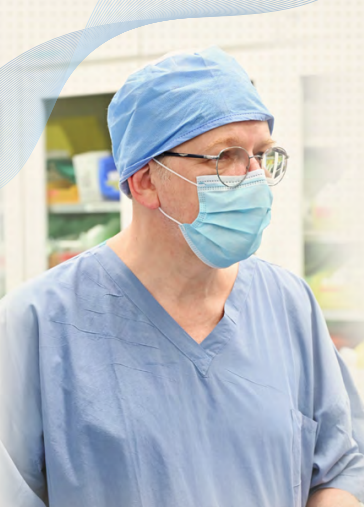 “I think I had a very interesting start to this profession,”
shared A/Prof Laszlo Kiraly, the
newly appointed Head of Congenital Heart Surgery Division in the
Department of Cardiac, Thoracic
and Vascular Surgery (CTVS) at
the National University Heart
Centre, Singapore (NUHCS).
“I think I had a very interesting start to this profession,”
shared A/Prof Laszlo Kiraly, the
newly appointed Head of Congenital Heart Surgery Division in the
Department of Cardiac, Thoracic
and Vascular Surgery (CTVS) at
the National University Heart
Centre, Singapore (NUHCS).
He was nine years old when he was
run over by a car. With a fractured
skull, he had to wear a head bandage while he stayed home to recuperate. That was when he first saw
a picture of Christiaan Barnard,
the surgeon who performed the
world’s first human heart transplant, gracing the cover of a magazine wearing a surgical cap.
“I thought I looked like him, with
my bandage,” said A/Prof Laszlo
Kiraly, who then kept the magazine cover as a poster and declared
that he too would become a cardiac surgeon one day.
“And I only wanted to focus on
babies and children. Never adults.”
Unwavering in his determination, that nine-year-old boy has
since accomplished much over
the years. He graduated from
Semmelweis Medical University in Budapest, Hungary, and
completed his postgraduate
medical training in the United
Kingdom (UK), France, and the
United States of America (USA),
earning the Hungarian and
European Board certification in
Cardiothoracic Surgery.
He returned to Hungary in 1996,
and in 2000, he was appointed the Chair of the newly set-up Congenital and Paediatric
Cardiac Surgery/Intensive Care
Unit at the Gottsegen National
Cardiovascular Centre, a leading healthcare institution in
Hungary dedicated to patient
care, clinical practice, teaching,
and research.
As a new unit, A/Prof Kiraly
led his team in redesigning
the surgical service to focus
on improving patient care and maximising hospital
resources. Everyone had to pitch in and he proudly recalled working on the logo design.
Following the success of the
programme in Hungary, A/Prof
Kiraly was invited to Abu Dhabi
in 2007 to establish and lead
a new tertiary-care paediatric
cardiac service at the Sheikh
Khalifa Medical City (SKMC) in
the United Arab Emirates (UAE),
which became the country’s
leading paediatric cardiac programme.
Before the programme was
launched, children in the UAE
had to travel abroad for operations. At SKMC, he built the
paediatric cardiac surgery service from the ground
up, including designing the operation
theatre and outlining the care protocol
from the prenatal to
adulthood for congenital heart diseases.
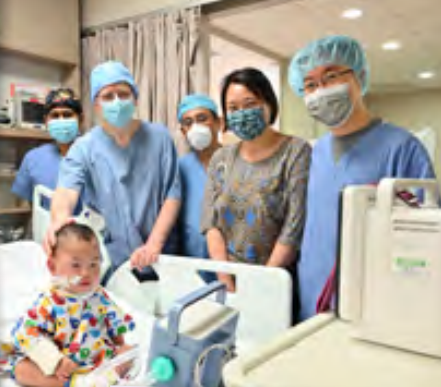 The programme launched in
2007 with the unit performing just around 100 operations.
When he left in 2021, his team
completed almost 5,000 procedures and achieved a survival
rate of above 97%.
Most of the operations were
performed on infants less than
a year old, with the majority
of patients being less than six
months old. The programme
has since expanded to serve
patients across the entire Gulf
region, keeping young patients
close to home and their families.
A keen adopter of innovative
techniques, A/Prof Kiraly and
his team in SKMC had completed several first-of-its-kind surgeries using the latest imaging
and 3D printing technology to
diagnose a patient’s condition
and devise an appropriate surgical plan.
In the case of a one-year-old
Jordanian boy who was born
with multiple cardiac malformations, 3D printing technology gave his surgical team clarity of his heart anatomy before
proceeding with the procedure. After braving 11 hours
of surgery and three months of
post-surgical care in 2020, the
boy is now able to lead a normal healthy life.
The programme launched in
2007 with the unit performing just around 100 operations.
When he left in 2021, his team
completed almost 5,000 procedures and achieved a survival
rate of above 97%.
Most of the operations were
performed on infants less than
a year old, with the majority
of patients being less than six
months old. The programme
has since expanded to serve
patients across the entire Gulf
region, keeping young patients
close to home and their families.
A keen adopter of innovative
techniques, A/Prof Kiraly and
his team in SKMC had completed several first-of-its-kind surgeries using the latest imaging
and 3D printing technology to
diagnose a patient’s condition
and devise an appropriate surgical plan.
In the case of a one-year-old
Jordanian boy who was born
with multiple cardiac malformations, 3D printing technology gave his surgical team clarity of his heart anatomy before
proceeding with the procedure. After braving 11 hours
of surgery and three months of
post-surgical care in 2020, the
boy is now able to lead a normal healthy life.
Uprooting after 14 years in Abu
Dhabi was not an easy choice
for him. “I miss my colleagues
the most as they have become
close friends,” said A/Prof
Kiraly. “But NUHCS made it easier because it was a chance for
me to share my legacy.”
Now 61 years of age, A/Prof
Kiraly felt a moral responsibility to pass on his experience. He
explained that paediatric cardiac surgery is a vocation that
demands an extensive amount
of training with a very steep
learning curve, making it very
challenging for a young surgeon to master the skills without proper guidance.
“As a surgeon, I do not wish to
take my secrets to the grave,”
he joked, half-serious. “It would be a disservice to patients, my
colleagues, and the practice as
a whole if I cannot pass on my
failures and triumphs for the
next generation to learn and
improve on.”
For this reason, to train and
educate the next generation of
surgeons has been on his key
agenda when he joined NUHCS
in April 2021.
Bringing with him video recordings of his past surgeries, A/Prof
Kiraly is looking to build a vault
of paediatric cardiac surgery
knowledge where doctors will
have access to a myriad of systematically documented surgical procedures for learning and
training.
This builds on the investment
NUHCS has made in recent
years to digitalise and equip
operation rooms with high-resolution cameras as well as
surgical training simulations
where surgical teams can practice and rehearse before complex operations.
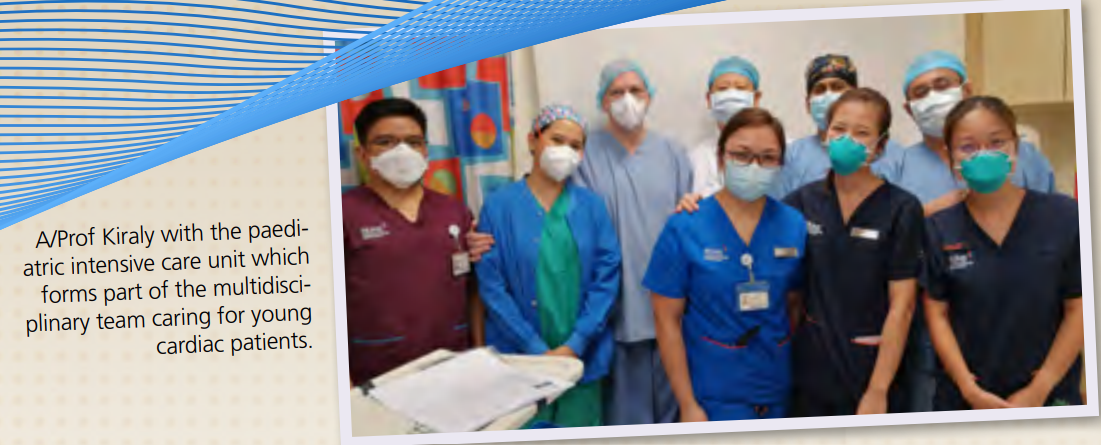 “NUHCS is well-known in the
medical community for its high
standards in surgery and adoption of advanced technology,”
remarked A/Prof Kiraly, who
hoped the vault will serve as
a teaching tool for future surgeons as well as a resource for
scientists and researchers developing new medical technology.
He was impressed with NUHCS’
achievements in minimally invasive techniques, where the results
have been published widely in
several medical journals; particularly after reading the first
comprehensive practical guide
book on minimally invasive cardiac surgery authored by A/Prof
Theodoros Kofidis, Head and
Senior Consultant, Department
of CTVS, NUHCS.
These methods however, have
limited applications in his specialised field where his patients are
much smaller in size. However, if
complemented with augmented
visualisation, he believes several
advantages could be achieved such as reducing the morbidity
rate of patients without jeopardising the quality of heart repair
and patient safety.
To that end, A/Prof Kiraly intends
to cultivate a learning culture to
advance the standards of paediatric cardiothoracic surgical practice here.
“NUHCS is well-known in the
medical community for its high
standards in surgery and adoption of advanced technology,”
remarked A/Prof Kiraly, who
hoped the vault will serve as
a teaching tool for future surgeons as well as a resource for
scientists and researchers developing new medical technology.
He was impressed with NUHCS’
achievements in minimally invasive techniques, where the results
have been published widely in
several medical journals; particularly after reading the first
comprehensive practical guide
book on minimally invasive cardiac surgery authored by A/Prof
Theodoros Kofidis, Head and
Senior Consultant, Department
of CTVS, NUHCS.
These methods however, have
limited applications in his specialised field where his patients are
much smaller in size. However, if
complemented with augmented
visualisation, he believes several
advantages could be achieved such as reducing the morbidity
rate of patients without jeopardising the quality of heart repair
and patient safety.
To that end, A/Prof Kiraly intends
to cultivate a learning culture to
advance the standards of paediatric cardiothoracic surgical practice here.
Research has proven that surgeons in solo practice with less
opportunity to interact with their
peers scored lower compared to
surgeons in group practice. Surgeons need to learn from others
to enhance their practice, consider various operative options and
improve patient outcomes. They
need to interact with their peers
to share videos of different techniques, post questions, analyse
data, and discuss to learn vicariously from one another.
At NUHCS, he established multidisciplinary teams where hospital staff from related disciplines
would participate in weekly cardiothoracic conferences including those from cardiac imaging, cardiac anaesthesia, intensive care as well as allied health
professionals responsible for
risk-stratification and public
data reporting to international
databases.
Every operation is preceded by
a detailed briefing package that
covers details including patient
pathways, scenario-planning,
and continuum-of-care plan to
ensure the team is kept informed
on the patient’s condition.
He intends to inculcate a strong
spirit of team ownership based
on transparent communication within the multidisciplinary
team. He also introduced new
avenues of training and education such as a journal club to
cultivate the culture of continual improvement where various techniques surgical options
could be analysed and discussed
in a team.
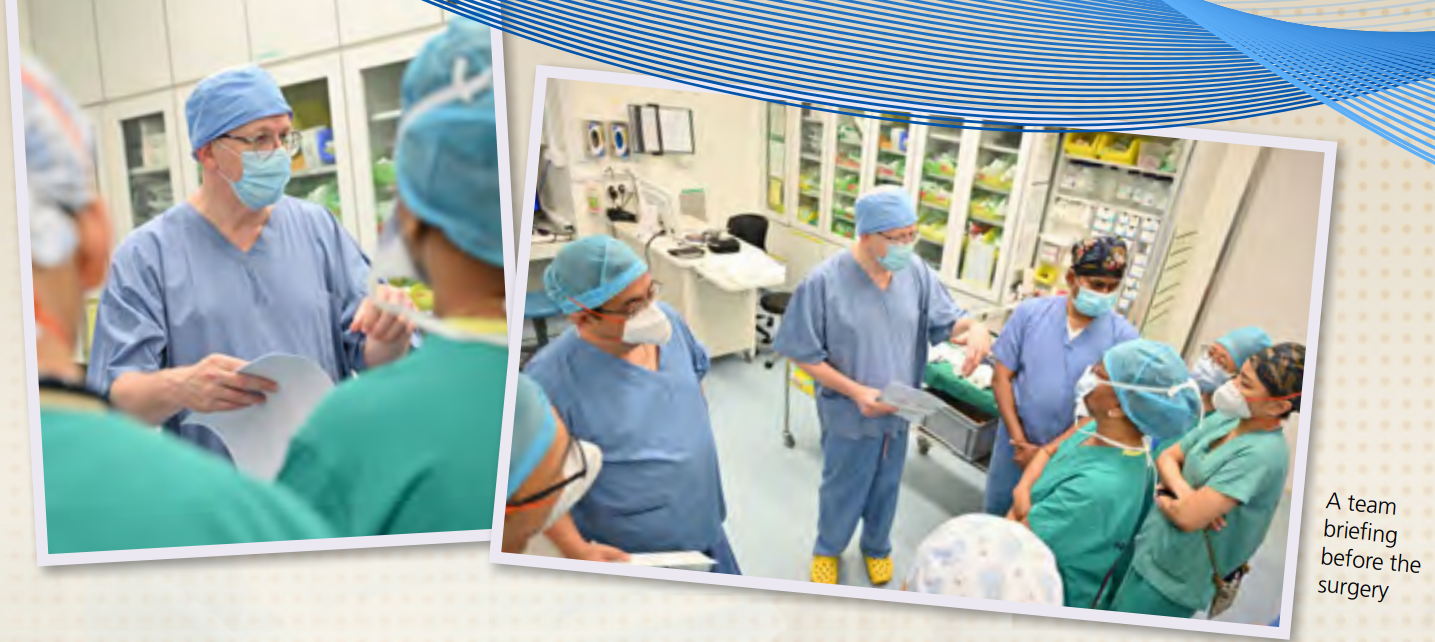
Performance reviews are held
monthly where factors such as
surveying patient outcomes,
team dynamics, and other key
indicators are monitored and
tracked to ensure accurate
up-to-date assessment of the
case-mix, an essential element
of outcomes reporting, quality
assessment, and improvement
initiatives.
Aside from documenting surgical procedures, he is working
with his team to review and
introduce new protocols where
procedures are formalised and
standardised, including guidelines for patient management
and care protocols for extracorporeal membrane oxygenation, post-operative care, and
for hybrid procedures which
could become more common in
future.
“NUHCS already has the elements of a centre of excellence in place,” noted A/Prof
Kiraly. “My goal is to look for
efficiencies and marry these
elements in developing a long-term strategy where the outcomes of our paediatric cardiac surgery programme can be
measured against international
benchmarks.”
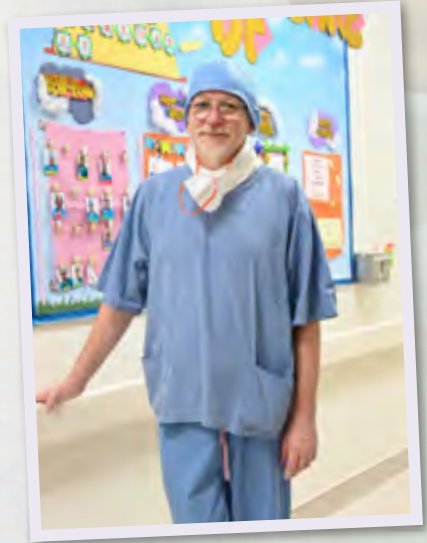
He is hoping to achieve the
next milestone for NUHCS’ paediatric cardiac surgical practice
– to gain recognition as a Centre of Excellence. Various published studies showed that the
achievement of a Centre of
Excellence status offers many
advantages for patients and
their families as well as healthcare providers.
Achieving this status promises a
sustainable solution where limited hospital resources and capital are maximised by concentrating exceptionally specialised expertise in one place, and
combining related resources to
deliver the service in a comprehensive, interdisciplinary fashion, achieving improved outcomes that would serve the
patient population better.
This further explains his emphasis on transparency in communications, and a robust
quality control system to be
implemented with continuous
recording and reporting of the
expected and observed outcomes for measurement and
evaluation. Doing so would
help to achieve a rigorous
performance improvement culture that will help to deliver a consistently high level of clinical quality outcomes for all
patients.
Ahead of this herculean task,
A/Prof Kiraly is excited to be in
Singapore. With the pandemic
putting some of his surgeries
on hold, he intends to get back
to cycling which he had given
up when living in Abu Dhabi.
“I’m excited to meet new
friends,” said the Hungarian,
“and learn more about Asian
cultures.”
